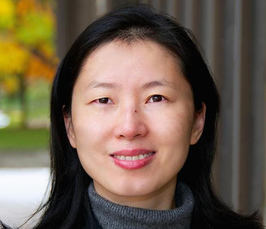Moiré superlattices: a new Hubbard model simulator?
Max Planck Lecture on Non-Equilibrium Quantum Phenomena
- Date: Feb 10, 2021
- Time: 02:00 PM - 03:00 PM (Local Time Germany)
- Speaker: Jie Shan
- Cornell University
- Location: online via Zoom
- Host: Andrea Cavalleri, Angel Rubio

Abstract:
The Hubbard model, first formulated by physicist John Hubbard in the 1960s, is a simple theoretical model of interacting quantum particles in a lattice. The model is thought to capture the essential physics of high-temperature superconductors, magnetic insulators, and other complex emergent quantum many-body ground states. Although the Hubbard model is greatly simplified as a representation of most real materials, it has nevertheless proved difficult to solve accurately except in the one-dimensional case. Physical realization of the Hubbard model in two or three dimensions, which can act as quantum simulators, therefore have a vital role to play in solving the strong-correlation puzzle. In this talk, I will discuss a potential experimental realization of the two-dimensional triangular lattice Hubbard model in angle-aligned heterobilayers of semiconducting transition metal dichalcogenides, which form moiré superlattices because of the difference in lattice constant between the two semiconductors.
Bio:
Jie Shan is a professor of Applied & Engineering Physics and Physics at Cornell University. She received her diploma in mathematics and physics from Moscow State University, Russia and Ph.D. in physics from Columbia University, USA. Research in her group is focused on experimental studies of the electronic and optical properties of nanoscale materials. Current activities have involved the investigation of novel two-dimensional atomic crystals such as graphene and transition metal dichalcogenides.
Zoom login:
[...]